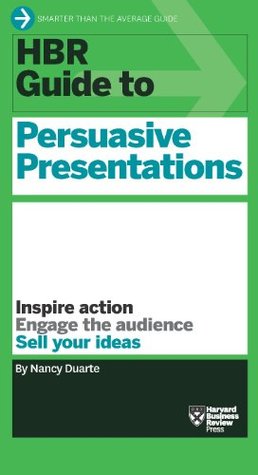More on this book
Kindle Notes & Highlights
Though presentations and audiences vary, one important fact remains constant: The people in your audience came to see what you can do for them, not what they must do for you. So look at the audience as the “hero” of your idea—and yourself as the mentor who helps people see themselves in that role so they’ll want to get behind your idea and propel it forward.
If you see your audience as a homogenous, faceless clump of people, you’ll have a hard time making a connection and moving them to action. Instead, think of them as a line of individuals waiting to have a conversation with you.
Follow a 10% rule of thumb: If your appendix is 50 slides, devote about 5 slides to your summary at the beginning.
People don’t fall asleep during conversations, but they often do during presentations—and that’s because many presentations don’t feel conversational. Knowing your audience well helps you feel warmly toward the people in the room and take on a more conversational tone.
Ask yourself, “What new beliefs do I want them to adopt? How do I want them to behave differently? How must their attitudes or emotions change before their behavior can change?”
Figure out where you have common ground, and communicate on that frequency.
Your big idea is that one key message you must communicate.
The big idea needs to express your perspective on a subject, not a generalization
You’ll also want to convey why the audience should care about your perspective.
Express your big idea in a complete sentence. It needs a subject (often some version of “you,” to highlight the audience’s role) and a verb (to convey action and elicit emotion).
After you set that baseline of what is, introduce your ideas of what could be. The gap between the two will throw the audience a bit off balance, and that’s a good thing—because it creates tension that needs to be resolved
Many presentations simply end with a list of action items, but that isn’t exactly inspiring. You want the last thing you say to move your audience to tackle those items. You want people to feel ready to right the wrong, to conquer the problem.
Visceral response, not pure analysis, is what will push your audience away from the status quo and toward your perspective.
Personal stories told with conviction are the most effective ones in your arsenal.
Take out a notepad and start cataloging personal stories and the emotions they summon. This exercise takes time, but it will yield material you can draw on again and again.
When developing metaphors, reject overused themes like racecars and sporting events—and avoid stock photos along those lines. If
Place Something They’ll Always Remember—a climactic S.T.A.R. moment—in your presentation to drive your big idea home. That moment is what the audience will chat (or tweet)
If statistics are shocking, don’t glide over them—amplify them.
Audiences connect with emotionally potent visuals.
Bring your message to life by dramatizing
Sometimes S.T.A.R. moments are gripping personal stories
People who know what they’re talking about don’t need PowerPoint. —Steve Jobs
If your content can be distributed and clearly understood without a presenter, you’ve created a document, not a presentation—and that’s fine as long as you treat it as such.
The only things you should actually project are images,
graphics, and phrases that move your ideas along—and cement them in the audience’s memory long after your presentation is over. Strip everything off your slides that’s there to remind you what to say; keep only elements that will help the audience understand and retain what you’re saying.
As you’re cutting material, rehearse with a clock counting up, not with a timer counting down. If you go over, you need to know how much you’re over.
The key to getting and holding their attention is having new things continually happen.
Audiences can process only one stream of information at a time.
Research shows that people learn more effectively from multimedia messages when they’re stripped of extraneous words, graphics, animation, and sounds. The extras actually take away meaning because they become a distraction.
Supplement the visual with a recording of the person you’re quoting or (if that’s not available) add voice-over so the audience feels as if it’s reading along
Golden Rule: Never deliver a presentation you wouldn’t want to sit through. —Motto at Duarte, Inc.


